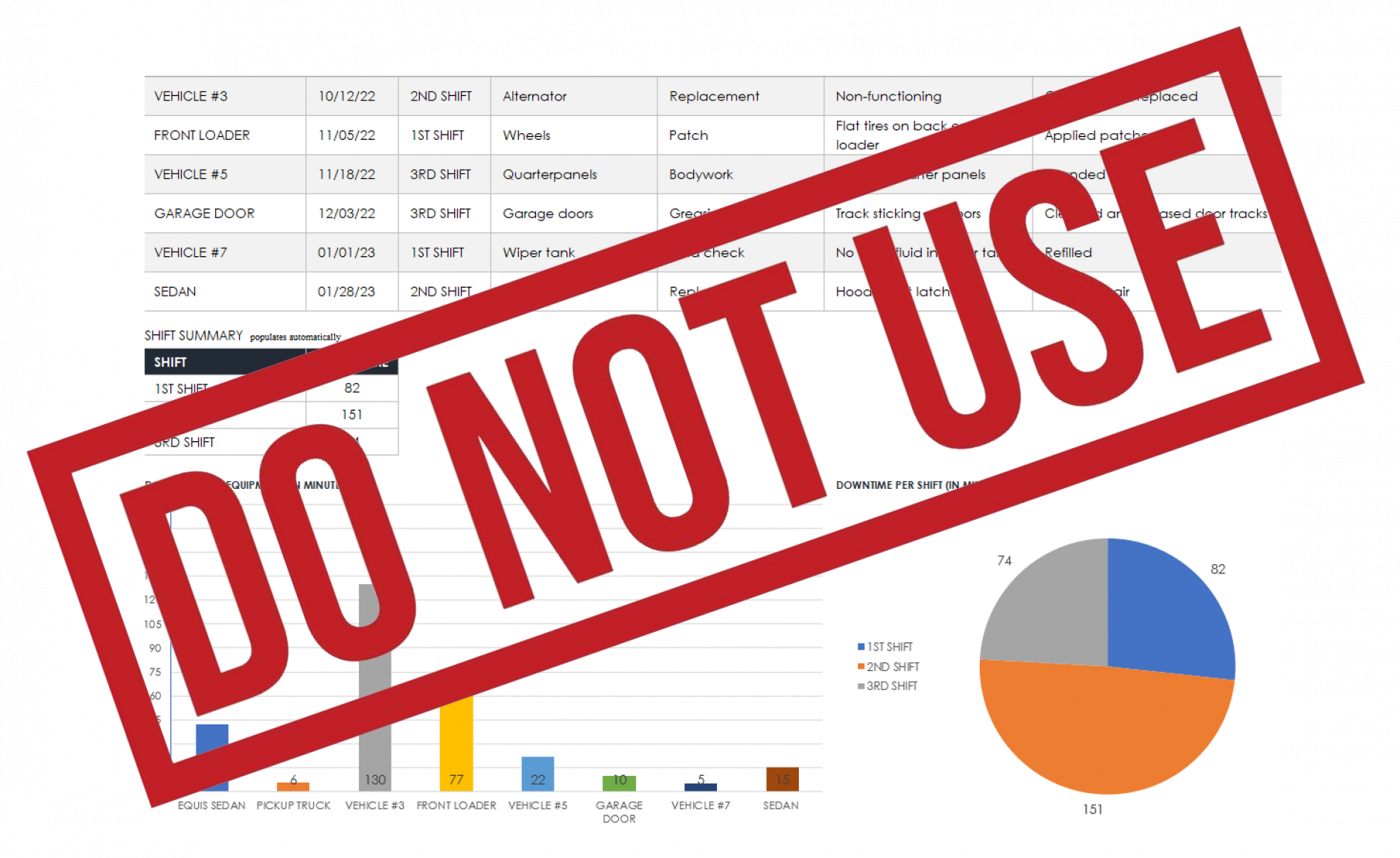Exploring free solutions? Try MDCplus
Try it yourself Get guided demoTracking Machine Downtimes with EXCEL Templates + Download + Pros and Cons
Efficient operations are the backbone of any industrial process. A disruption in production, no matter how small, can escalate into missed deadlines, financial losses, and customer dissatisfaction. One often-overlooked factor in these disruptions is the inefficiency of tracking machine downtimes using manual options.
Why Do People Use Manual Tools for Tracking?
Despite their limitations, manual tools such as EXCEL templates and paper journals remain a common choice for tracking machine downtimes. Several factors contribute to this preference:
- Low Initial Costs: EXCEL templates are inexpensive and available online, making them an attractive option for businesses with heavily limited budgets.
- Ease of Setup: These tools require minimal technical knowledge and can be implemented quickly without specialized training or software installation.
- Familiarity: Many workers and managers are accustomed to using PC and Microsoft products, making it a convenient choice when introducing new tracking processes.
- Perceived Control: basic templates allow operators to customize tracking formats to suit their specific needs, creating a sense of control over data collection.
- Short-Term Simplicity: For smaller operations or those with less complex machinery, downloading the spreadsheet template may seem like a straightforward and sufficient solution.
However, these benefits often diminish as businesses grow or when operational complexity increases, exposing the critical shortcomings of manual tracking systems.
Where Can I Download Good Downtime Tracking Tool?
Our MDCplus downtime tracker for machine shops and everyone who needs it is available for download through the link - MDCplus Downtime Tracker
Hidden Pitfalls: The Problem of Data Silos
One of the biggest challenges with EXCEL-based tracking systems is the creation of data silos. When information is scattered across multiple spreadsheets or journals:
- Collaboration Breakdowns: Teams struggle to share and access information efficiently.
- Analysis Limitations: Consolidating and analyzing downtime data from disparate sources becomes time-consuming and prone to errors.
- Delayed Decisions: Managers lack real-time visibility into machine downtimes, which hampers their ability to respond to issues proactively.
The Consequences of Manual Tracking
Manual tracking with EXCEL templates isn’t just a simple inconvenience; it’s a systemic issue that impacts multiple facets of operations:
- Production Delays: When a machine halts, the entire production line suffers, potentially leading to penalties for delayed orders.
- Higher Labor Costs: Workers may be left idle or need to work overtime to make up for lost time, increasing payroll expenses.
- Material Loss: Machines stopping mid-process can result in defective or incomplete products, wasting valuable resources.
- Customer Retention Risks: Failing to meet expectations for quality or delivery times can drive clients to explore other suppliers.
The Drawbacks of Tracking Downtimes with EXCEL Templates
While it may appear to be a practical solution, they create bottlenecks rather than efficiencies. Here are some common pitfalls:
- Imprecision: Data recorded in EXCEL templates often lacks the accuracy needed to address recurring equipment issues.
- Slow Responses: Logging and communicating downtime information manually delays maintenance and prolongs disruptions.
- Lack of Usable Insights: EXCEL templates don’t provide the depth of data necessary to identify patterns or optimize machine utilization, and are heavily dependent on person analytical skills.
- Inconsistent Data: Different operators may use varying formats and terminologies in their templates, leading to unreliable information.
- Time-Intensive: Employees required to manage multiple spreadsheets lose focus on other critical tasks.
- Risk of Data Loss: Files can be misplaced, corrupted, or poorly maintained, leaving teams without vital historical downtime records.
Tired of papers and spreadsheets?
Track your downtimes automatically with MDCplusBroader Impacts of Inefficiency
Beyond the immediate operational challenges, tracking downtimes with EXCEL templates can undermine broader business goals:
- Missed Opportunities for Optimization: Without reliable and centralized data, it’s impossible to identify inefficiencies or implement preventive measures.
- Increased Wear on Equipment: Inadequate monitoring can delay maintenance, resulting in equipment failures and shortened lifespan.
- Supply Chain Challenges: Unreliable tracking can disrupt timelines across the supply chain, affecting suppliers and customers alike.
The Path Forward: Machine Monitoring Systems
To overcome these challenges, businesses should transition from EXCEL-based tracking to dedicated machine monitoring systems that collect and analyze data in real time. These systems offer:
- Accurate Performance Data: By automatically gathering precise metrics, monitoring systems eliminate the inconsistencies of human-filled templates.
- Timely Alerts: Real-time notifications allow maintenance teams to address issues before they escalate.
- In-Depth Analytics: Machine monitoring systems generate actionable insights, enabling businesses to pinpoint inefficiencies and optimize operations.
- Flexibility for Growth: These solutions scale with your business, ensuring consistent tracking and reporting as operations expand.
Relying on EXCEL templates for tracking machine downtimes may seem cost-effective, but it creates unnecessary obstacles that hinder productivity and profitability. By adopting advanced machine monitoring systems, businesses can minimize disruptions, improve efficiency, and maintain a competitive edge. Now is the time to move beyond outdated tools and invest in solutions that ensure long-term operational success.
About MDCplus
Our key features are real-time machine monitoring for swift issue resolution, power consumption tracking to promote sustainability, computerized maintenance management to reduce downtime, and vibration diagnostics for predictive maintenance. MDCplus solutions are tailored for diverse industries, including aerospace, automotive, precision machining, and heavy industry. By delivering actionable insights and fostering seamless integration, we empower manufacturers to boost Overall Equipment Effectiveness (OEE), reduce operational costs, and achieve sustainable growth along with future planning.
Ready to increase your OEE, get clearer vision of your shop floor, and predict sustainably?
